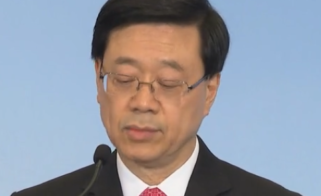The population of Hong Kong is relatively young when compared with many developed economies, but is getting older quite rapidly. Today people aged 65 and above account for about 10 percent of the population. This proportion is projected to be 13 percent by 2016 and 20 percent by 2036. (1)
The Mandatory Provident Fund (MPF) Schemes Ordinance enacted in 1995 provides the legal framework for the establishment of a system of employment-based, privately managed, defined-contribution retirement savings schemes. The objective of the MPF system is to provide a formal system of retirement protection. Prior to the system, only about one-third of the 3.4 million workers, mainly civil servants and professionals, benefited from some forms of retirement benefits.
As the population gets older, there will be more retirees and fewer workers. In order to maintain the same standard of living, the economy will need to be more productive. This can be brought about by additional savings to increase the capital available to the economy in the future. The MPF system is a forced retirement saving program. A typical worker is required to contribute 10 percent of his earnings (2) to an investment fund. Whether the system will succeed in raising the saving rate is unclear. On the macro level, Hong Kong already has a high saving rate of more than 30 percent. There are no statistics on household savings. It is unknown how many families have a saving rate of less than 10 percent, and how many will be induced to save more. People can undo the forced saving by increased borrowing. (3)
Much of the household savings are invested in housing and in bank accounts that have low rates of returns. Only 20 percent of the adult population invests in the stock market, and about 6 percent hold mutual funds. (4) The MPF system will therefore boost the number of investors by three to four times, and help to enrich their financial portfolios. One study finds that $1 of equity may be worth $1.59 to households lacking access to the capital markets (Geanakoplos, Mitchell, and Zeldes 1998).
The MPF system started operation on December 1, 2000. Annual MPF contributions were estimated to be around $10 billion in the initial years of operation and expand to $60 billion when the system matures after 30 years. This source of funds would provide impetus to the further development of the capital market, particularly for the already sizable fund management industry in Hong Kong. The intermediation role of banks will be under pressure. Instead of relying on bank financing, medium-sized firms will have more access to the capital market. In 20 years, the business landscape in Hong Kong will no longer be dominated by small- and medium-sized enterprises.
This paper will describe key features of the MPF system, and focus on a number of issues: namely, the rationales behind the MPF system, MPF retirement benefits, annuitization, and the interaction between MPF and the welfare system.
Key Features of the MPF System
The MPF system is basically a forced retirement saving program. Investment funds, called MPF schemes, are set up by private companies to invest the savings. All MPF schemes must be established under trust arrangement and governed by Hong Kong law. The trust arrangement means that scheme assets will be held separately from the assets of the trustees or the investment managers. This safeguards the interest of the scheme members from unnecessary financial risks.
MPF Schemes
There are three types of MPF schemes. A master trust scheme is a scheme with open membership to workers of different employers and different self-employed persons. Such master trust schemes can exploit the economies of scale from pooling the contributions of small employer units together for administration and investment. This type of scheme is especially suitable for small- and medium-sized enterprises. An employer sponsored scheme is a scheme with membership open to the employees of a single employer. This type of scheme is only practical for companies with a large number of employees. An industry scheme is a scheme specially established for workers in industries with high labor mobility, such as the catering and construction industries. Features are set up to minimize the costs involved in transferring accrued benefits when workers change employment within the same industry.
Investment Funds
Investment managers are appointed by the trustees of MPF schemes to make long-term investment of scheme assets. Each scheme typically offers a couple of investment funds to its members. One of the funds must be a Capital Preservation Fund, which is basically a money market fund. There are strict guidelines on the types of assets in the investment funds. (5)
Employers are mandated to choose at least one scheme for their employees. (6) Employers therefore indirectly choose the investment managers. Employees can choose their own investment portfolio out of the funds provided by the scheme chosen by their employers. (7)
Coverage
The MPF system is meant to have broad coverage. Employers are mandated to enroll their workers in approved MPF schemes. Unless exempted, workers aged between 18 and 65 are required to join the system by enrolling in approved MPF schemes. The system includes full-time and part-time employees who have been employed for 60 days or more under an employment contract. (8) Self-employed workers are also required to join.
